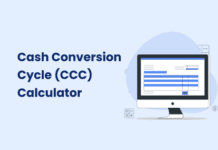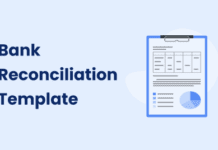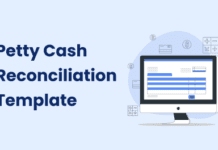Duplicate invoices are a silent threat to your business. They sneak into your system, create chaos, and drain resources. Whether human error or system glitches, they hurt your bottom line and complicate financial compliance.
Detecting duplicate invoices can feel overwhelming, especially when managing large volumes. But here is the good news: AI-powered invoicing solutions can tackle this problem head-on. The market for invoice automation software is growing quickly. In 2024, it was valued at about $3.37 billion. By 2031, experts estimate it will reach nearly $8.91 billion. This growth means the market will expand at an annual rate of 14.26% over the next several years.
This article will cover the common causes of duplicate invoices, the challenges businesses face with manual detection, and how AI technologies can streamline this process.
First of all, let us understand what duplicate invoices are.
What are Duplicate Invoices?
A duplicate invoice arises when a business is billed twice for the same work. These extra invoices create significant risks for businesses.
Most share the same details, which makes them easy to spot. Such as –
- Identical invoice numbers
- Dates
- Amounts
- Line-item details
The real challenge emerges with modified duplicates. Invoice details change slightly. A number shifts, a date moves forward, and an amount increases by a small percentage. These subtle changes make detecting duplicate invoices difficult.
Duplicate invoices arise in two scenarios:
- First are genuine mistakes, where vendors accidentally submit multiple bills.
- Second are deliberate attempts at fraud, where invoices are manipulated for financial gain.
The Association of Certified Fraud Examiners (ACFE) shared some important findings in their 2022 report on workplace fraud. They found that invoice fraud and similar billing scams were some of the most common ways assets were stolen. Billing fraud made up 20% of all cases they studied.
These scams often cause big financial losses. One reason is that they go undetected for a long time—sometimes up to 18 months. During that time, the losses could add up, with many cases resulting in a median loss of $100,000. For more information, refer to the ACFE’s 2022 report on occupational fraud for further insights.
Fraud schemes are becoming more advanced. Some fraudsters even create entirely fake vendor accounts. These fictitious vendors submit invoices that look professional, complete with proper formatting, valid business details, and all the typical elements you would expect in a legitimate document. They closely mimic standard business practices, making detecting duplicate invoices a bigger challenge.
Your AP team can end up spending valuable time checking if these invoices are from fictitious vendors. They may have to:
- Track down the duplicate payment
- Contact the “vendor” for clarification
- Wait for a refund to be processed
- Adjust accounting records to reflect corrections
This is why detecting duplicate invoices early is so important. Whether it is an honest mistake or fraud, preventing double payments keeps your company’s money where it belongs—in your bank account.
What are the Most Common Reasons for Duplicate Invoices?
Duplicate invoices occur for several reasons, each of which can disrupt financial operations and lead to costly errors. Understanding these causes will make detecting duplicate invoices easier. Let’s observe some common reasons.
1. Supplier Duplicates
Having multiple records for the same vendor in the ERP system can cause duplicate invoices. This happens when the same invoice is processed under different supplier names.
For example, your finance team has the same vendor listed twice in the ERP system—once as “ABC Corp” and again as “ABC Corp, LLC.” They receive an invoice from the vendor but process it under both entries, which leads to paying the same invoice twice. The duplicate records make it hard to spot the mistake right away.
2. Data Entry Errors
Manual entry increases mistakes. Typos or incorrect details can easily cause duplicate payments. For example, a finance team member manually enters an invoice but makes a typing error. Instead of $1,500, they enter $15,000. Later, another employee processes the incorrect amount. The system does not catch the mistake, leading to overpayment.
3. Missing Purchase Orders
Invoices without POs are more likely to be resubmitted. Without a PO, tracking, and verification become difficult, leading to duplicate payments.
For instance, a vendor submits an invoice without a purchase order (PO). The finance team processes it anyway. Later, the vendor sends the same invoice again, thinking it hasn’t been paid. Without a PO to match it against, the finance team processes the duplicate, paying twice for the same service.
4. Expense Reimbursement Claims
Duplicate invoice issues can also occur within the office. Employees may even submit travel expense reimbursement claims more than once. Small amounts are often hard to catch without proper tracking.
Suppose an employee submits an expense claim for a business trip. A month later, they resubmitted the same claim by mistake, thinking it hadn’t been processed. Without a streamlined employee reimbursement process, the company may pay them twice.
How Duplicate Invoices Are Handled by the AP Teams?
Duplicate invoices are minor errors and hidden pitfalls that can lead to unnecessary payouts, budgeting hassles, and strained vendor relationships. With a structured approach, AP teams stay ahead of these issues and maintain a clean financial record.
Here is a quick look at how they tackle duplicates efficiently:
- Automatic Detection
Many AP systems help with detecting duplicate invoices by flagging similar details. They scan for identical invoice numbers, vendor IDs, or amounts. When they detect a match, they alert AP teams to check for duplicates.
- Manual Verification
After the system flags duplicates, AP teams check each one manually. They review details such as the invoice date, amount, and purchase order. This step makes sure that valid invoices aren’t accidentally labeled as duplicates.
- Approval Workflow
AP teams follow an approval process if an invoice is a confirmed duplicate. They may need a manager’s permission before adjusting or removing the entry. This process helps prevent unauthorized changes.
- Record and Report
Each duplicate invoice is logged for future reference. This record keeps track of past duplicates and helps with vendor discussions if needed.
- Continuous Monitoring
Regular audits are essential for detecting duplicate invoices that might slip through. These ongoing checks keep records accurate and protect the company’s finances.
This approach ensures AP teams stay on top of detecting duplicate invoices, helping maintain clear records and smooth vendor relations.
How to Avoid Duplicate Invoices Using AI Technology?
Automating invoice processing with AI is a game-changer for accounts payable teams. It helps reduce errors, save time, and improve financial accuracy. Let us look at the key AI technologies that streamline this process.
1. Optical Character Recognition (OCR)
Optical Character Recognition (OCR) helps capture and read invoice details automatically. It converts printed or handwritten invoices into digital data. OCR scans key details such as invoice numbers, vendor names, and amounts, then uploads them into the system.
Example: When a paper invoice is scanned, OCR reads all the important information and automatically fills out the necessary fields in the system, making the process much faster.
2. Natural Language Processing (NLP)
NLP, or Natural Language Processing, helps computers read and understand invoices, even if they look different or are in other languages. Some invoices are unstructured, meaning they do not follow a clear format. NLP can analyze these and simplify the content, ensuring AP teams do not miss important details, no matter how the invoice is laid out.
For example, if you work with foreign clients, they may send invoices in their language – French, German, etc. With NLP, your team can understand the invoice without manually reading or interpreting it.
NLP technology also helps centralize vendor records by ensuring each vendor has a single profile. This prevents confusion and the risk of duplicate payments. Regularly using NLP to review and clean up vendor lists keeps your records accurate and avoids multiple entries for the same vendor.
3. Machine Learning Algorithms
Machine learning (ML) helps accurately match purchase order numbers with invoices. ML algorithms get smarter with every invoice processed, learning from past data to improve accuracy. The system picks up patterns, such as how vendors format their invoices or common billing errors. It can detect mistakes, such as duplicate entries or wrong details. Over time, this makes the process faster and more efficient and helps prevent costly errors.
For example, the system notices a pattern if a vendor always sends invoices with the same layout. If a new invoice looks different or suspicious, the system flags it.
4. Pattern Recognition
AP automation software has pattern recognition abilities that help find invoice similarities or differences. It is often used in two-way or three-way matching.
- Two-way matching checks if the invoice matches the purchase order.
- Three-way matching adds another check by including the receipt note.
During routine audits, pattern recognition helps find mistakes in invoices. It can catch repeated amounts or vendors with small changes in details. This makes it easier for finance teams to review accounts. It also flags any issues that need a closer look. This way, businesses can keep their finances accurate and follow the rules.
For example, if the invoice matches the purchase order and receipt, payment is approved. If line item details such as quantity or price do not match, the system alerts the finance team to fix it before processing.
Business Benefits of Using AI for Duplicate Invoice Prevention
AI-powered tools offer many benefits to finance teams dealing with duplicate invoices. Let’s examine how they can significantly improve daily operations.
1. Cost Savings
AI helps businesses catch costly mistakes such as double payments. When invoices are processed manually, errors happen, which can lead to paying the same invoice twice. AI helps detect duplicate invoices quickly, preventing extra money from being paid. This leads to big savings, especially for businesses that handle large or frequent payments. With AI, companies can avoid overpayments and improve their finances. This also reduces the time finance teams spend fixing errors, making operations more efficient.
2. Improved Accuracy
A cloud-based invoice approval system helps by automatically checking key details, such as dates, vendor names, and amounts, from anywhere. This reduces errors and keeps your financial records accurate. Clean records are important, especially when you need them for audits. By catching mistakes early, AI ensures your finances are organized and reliable. This saves time and prevents problems arising during financial reviews or audits.
3. Fraud Prevention
According to the study, 1,533 senior finance executives in the US and UK encountered an average of 13 cases of attempted invoice fraud in the past 12 months. Worse yet, about 9 cases of successful fraud occurred per company, costing organizations an average of $133,000 per incident—leading to total annual losses nearing $1.2 million.
Check out how AI helps stop fraud by spotting suspicious activity, such as duplicate invoices.
AI learns patterns over time and flags anything unusual. This reduces the risk of invoice fraud. AI monitors invoices, ensuring you don’t pay fake or duplicate ones. This helps protect your money and ensures payments are made only for valid invoices. It acts as a safeguard, watching for signs of fraud before it causes harm to your business.
4. Compliance
Staying compliant with financial rules means keeping accurate records. AI helps businesses check invoices for errors and keep everything organized, which is important for passing audits and avoiding fines. AI also ensures that financial reports are correct and always up to date. Consistent, error-free records are key to staying compliant over time. Using AI, companies can focus on running smoothly without worrying about missed details that could lead to penalties.
Peakflo’s Solutions to Prevent Duplicate Invoices
Peakflo’s AI-driven solutions go beyond basic automation. It offers businesses an advanced approach to financial management. Here is how Peakflo’s AI-driven invoicing solution can help:
- AI-Powered Invoice Capture: Peakflo uses AI-powered OCR to scan and convert paper invoices into digital files. It finds and flags duplicates automatically, reducing manual oversight.
- Approval Workflow Automation: Each invoice goes through a set approval process. This stops any invoice from being accidentally approved or paid twice.
- AI-powered Two-Way/Three-Way Matching: Peakflo compares invoices to purchase orders and receipt notes. It flags any issues before payments are made.
- Vendor Portal: Vendors can see their invoices and track payments. This reduces confusion and lowers the chances of duplicate submissions.
- Automated Payments: Payments are processed automatically. They are double-checked to avoid overpayment or duplicate payments.
Conclusion
Automating your accounts payable process helps reduce mistakes and avoids duplicate invoices. It gives you better control and visibility over your financial data, allowing you to make quicker, informed decisions. This improves efficiency and keeps your cash flow smooth.
Peakflo offers a solution that automates invoice processing and tracks payments in real-time. It also simplifies your workflows, cutting down on manual tasks. This way, your team can focus on managing finances accurately and with more control.
Want to improve your invoice management? Book a demo tour today to see how Peakflo’s AI-powered solutions can help!











































